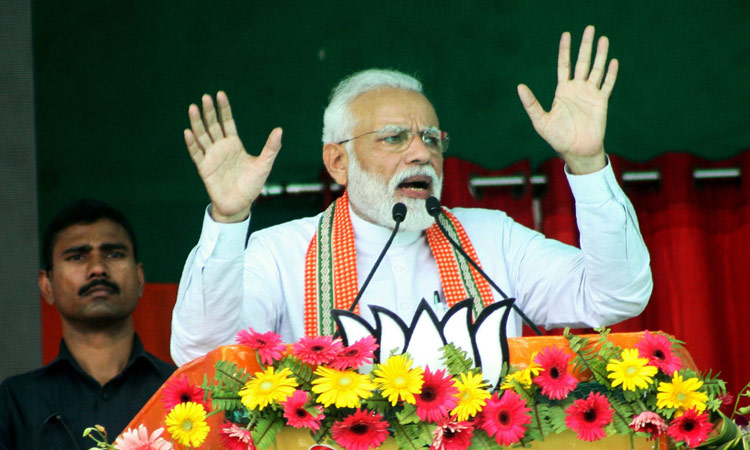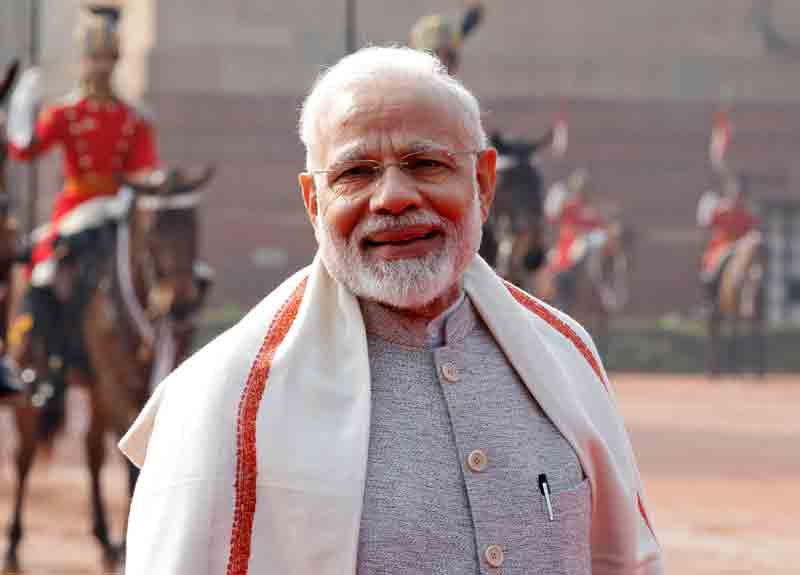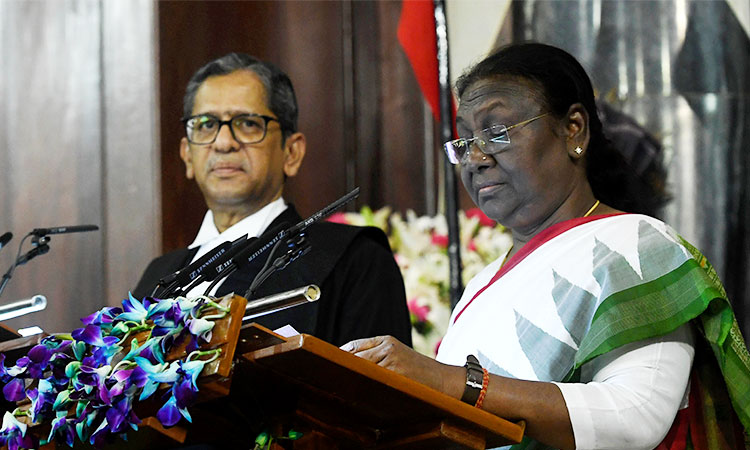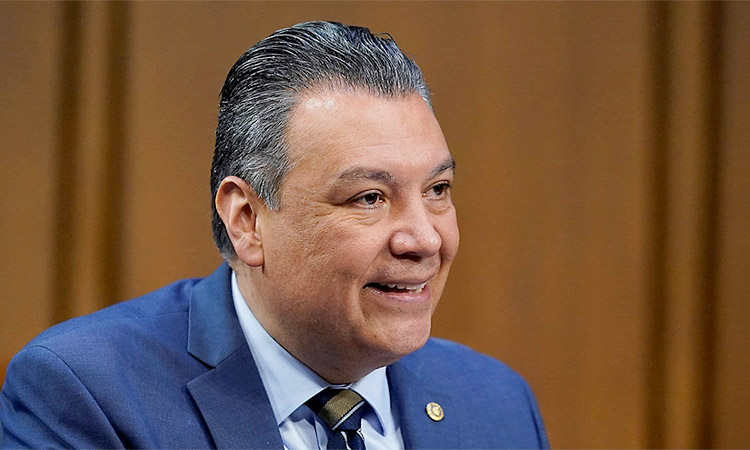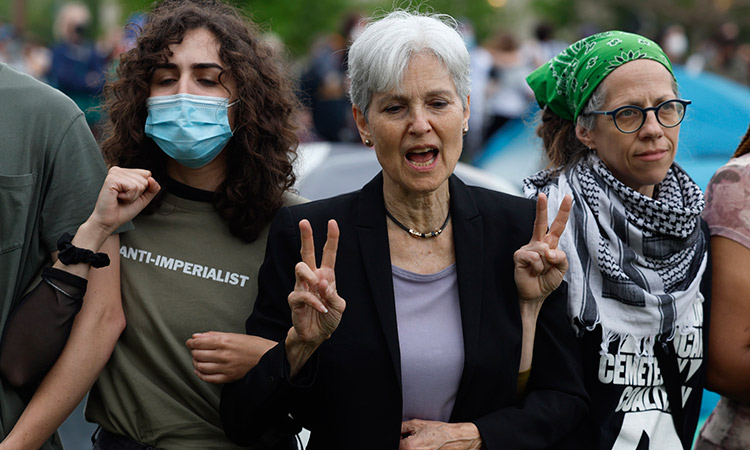Hijab ban disturbs peace in campuses
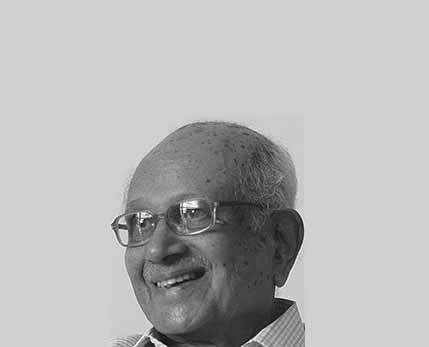
BRP Bhaskar
@brpbhaskarIndian journalist with over 50 years of newspaper, news agency and television experience.
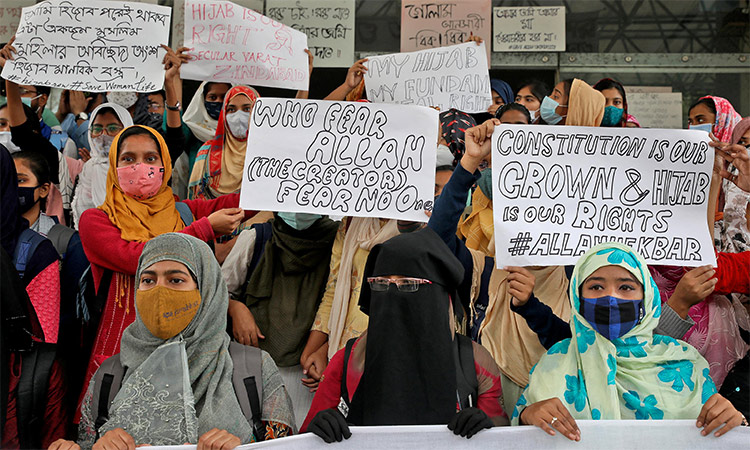
Muslim students display placards during a protest against the recent hijab ban in few colleges of Karnataka, India. Reuters
Karnataka is the only state in the south where Prime Minister Narendra Modi’s Bharatiya Janata Party is in power.
The BJP has high stakes in these elections as all the states on the poll calendar except one are under its rule. The hijab controversy broke out in the campus of a government-run junior college in the town of Udipi in Dakshina Kannada district.
The college has a dress code which requires students to wear a uniform. It lets girls enter the campus wearing the hijab but does not permit them to keep it on in the classroom.
As six Muslim girls protested in the campus against the restriction on use of the hijab, Hindu boys staged a counter-protest, wearing saffron shawls.
Saffron is the colour of the flag used by Hindutva groups.
Similar protests erupted also in some other colleges in Udipi and in the Shivamoga district.
A video from one of the colleges showed a lone hijab-wearing girl facing a group of shawl wearing men and responding to their chants of Sri Rama Jayam (Victory to Lord Ram) with “Allah ho Akbar”.
After some stone-throwing incidents were reported, the state government ordered closure of colleges till February 16. It also banned the assembly of more than four persons.
The hijab controversy had repercussions elsewhere in the country and abroad.
Hundreds demonstrated in Chennai, Hyderabad and Kolkata against curbs on use of the hijab.
Two Muslim students raised the hijab issue in the Karnataka High Court. In a six-page order, it upheld the dress code and said the interests of students will be served better by their returning to classes rather than raise protests over issues like wearing the hijab and saffron shawls.
It appears to have erred in equating the hijab with the saffron shawl.
The petitioners challenged the High Court’s order in the Supreme Court. Chief Justice NV Ramana ordered listing of the petition.
He said the court would take up the matter at an appropriate time and protect the constitutional rights of every citizen. In the meantime the issue should not spread at the national level, he added.
In a college in Jaipur, capital of Rajasthan state, a few Muslim students turned up wearing the hijab. The authorities asked them to stick to the prescribed uniforms.
In Islamabad, the Pakistan government summoned the Indian ambassador and conveyed its concern over the hijab incidents.
The issue drew adverse comments also from the West. Rashad Hussain, US Ambassador-at-large for International Religious Freedom, said hijab bans in schools “violate religious freedom and stigmatise and marginalise women and girls”.
Responding to foreign comments, the External Affairs Ministry issued a statement rejecting them as “motivated comments” on internal matters.
Pakistani campaigner for women’s education Malala Yousafzai Malik tweeted: “Refusing to let girls to go to school in their hijabs is horrifying.”
Malala, who was awarded the Nobel Prize for Peace nine years ago, when she was only 15, for braving a Taliban attack to assert girls’ right to education, appealed to Indian leaders to do something to stop marginalisation of Muslim women.
Few critics, domestic or foreign, took note of the fact that the hijab controversy involves conflict between rights of different kinds.
Under the Indian Constitution, all citizens are equal, regardless of caste, religion and gender.
The basic issue is not Muslim girls’ right to education but appropriateness of the dress code prescribed by educational institutions to reinforce the concept of equality.
The developments in Karnataka cannot be viewed in isolation from the BJP’s long-standing accusation that previous governments at the Centre had followed a policy of appeasement of minorities.
When the Constitution was enacted, it permitted continuance of personal laws of certain sections of the population. At the same time, one of its directive principles enjoins upon the government to work towards the promotion of a uniform civil code. The BJP has cited lack of progress in this matter as proof of appeasement.
Like abolition of Jammu and Kashmir’s special status, enactment of common civil code was on every election manifesto of the BJP.
In the wake of the hijab ruckus, Pushkar Singh Dhami, Chief Minister of poll-bound Uttarakhand, said that if the BJP returns to power the government will consider legislation to introduce uniform civil code in the state.
The Prime Minister was silent on the issue. There was no attempt by him or any other BJP leader to restrain the men in saffron shawls and the party’s cyber activists who ran a vicious campaign against hijab-wearing girls.
All rights are important. It is the bounden duty of all responsible persons to bend their energies towards peaceful resolution of conflicts among rights and not contribute to their aggravation through acts of omission or commission.
